Cinema, Gramophone, Radio: A Quiet History
Over the past few years I have turned my attention to Canada’s role in the development of 20th century communications technology. Embedded within a prismatic research practice, the process included rigorous research, theoretical writing and æsthetic experiments. In particular, I turned my focus to the birth of cinema’s architecture, Emile Berliner’s gramophone factory and wireless technology; in other words, the seminal fields at the turn of the last century: motion pictures, sound recording and electromagnetic transmission. Canada has played an important role in each of these areas — if not for their invention at least as the site of their experimentation and implementation. Each project looked at the historical context, an æsthetic tradition and geographical site attempting to collide what are normally disparate narratives, forging both a historical understanding and phenomenological experience. For the purpose of this text, I will limit my descriptions to the artworks Aletheia’s Veil and The DEW Project. (1)
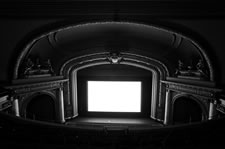
Aletheia’s Veil
The show of the future is an empty theatre.
— Yves Klein,1959.
The luminous rectangle of the cinema screen became an archetype in the imagination of the 20th century. Connected as much to avant-garde painting as to cinema, the white rectangle functioned as the infinite space where anything and everything was possible: the ground zero for utopia. Starting with Malevich, the white rectangle continually resurfaced throughout the 20th century reaching a certain endgame in the work of painter Yves Klein’s Void series. Transferring mediums, the white rectangle makes an important but little-known appearance in the work of Nam June Paik’s Fluxus film Zen for Film (1962–64) while exiting the epoch with the photographs of Hiroshi Sugimoto’s Theater series (1976–2001), which indeed does show, as Klein predicted, empty theatres radiating with the pure white light of time exposed.
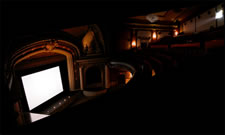
In 1913, and five years before Malevich painted White on White, the Cinema Imperial opened in downtown Montréal — a city which boasts the first architecture built exclusively for cinema. While no longer standing today the Ouimetoscope is considered the first designed architecture strictly for motion picture projection. Motion pictures had found a home for several years in vaudeville theatres and other such venue, but it was in Montréal that the cinema palace was born. Few turn-of-the-century theatres exist today, as TV, home video and now the internet have progressively taken a bite out of exhibition attendance which peaked somewhere in the mid-20th century. The Imperial however is one of these last bastions. Originally a combination vaudeville/film venue like most spectacles at the time, the Imperial has undergone several ownerships and nearly as many architectural modifications. In 1995, Hiroshi Sugimoto held open his shutter to capture the entire light from Claude Lelouch’s Les Miserables illuminating the restored architecture of the Cinema Imperial. For Aletheia’s Veil I have reverse-engineered Sugimoto’s frozen process, returning to the form of the motion picture. Aletheia’s Veil was shot in the interior of the Cinema Imperial, however instead of re-projecting Les Miserables, I projected clear 35 mm film leader onto the cinema screen making a historical connection between Paik and Sugimoto. With a slow zoom into the empty screen of the Imperial (reminiscent of the zoom in Michael Snow’s 1967 Wavelength), the cinema’s interior is pushed out of the frame leaving only a white field of light.
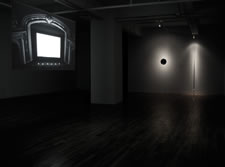
In the gallery, the footage is formally separated into a 2-channel video installation. The two videos are projected from opposite sides of the room onto the same translucent silk screen suspended in the middle of the gallery between the projectors. One projector is responsible for the cinema screen in the Imperial that has been extracted from the centre of the frame and the other projector is responsible for the architecture of the Imperial leaving a lack in the middle of the frame for the Imperial screen. Synched at the frame level, together the two projectors create a composite image of the film playing within the theatre. At the full extension of the zoom, the representation of the Imperial’s architecture vanishes, leaving only a luminescent white silk curtain hanging in an empty art gallery. We move from representation of a-place (the u-topia of the cinema) to the pure materiality of white light, silk and the body present in the current architecture of the white cubed gallery. Eventually, the camera zooms out of the screen and back into the interior of the Imperial. Echoing the 35 mm film loop that was twisted into a möbius strip and projected in the original cinema palace, the video takes 30 minutes to loop as a palindrome (spatially + temporally).
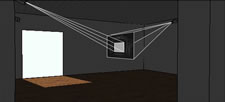
The soundtrack to the installation runs a parallel history.
At the beginning of the 20th century, Emile Berliner (inventor of the flat record, among other important creations) founded a record and gramophone factory in the St. Henri neighbourhood of Montréal. The soundtrack to Aletheia’s Veil finds its source in a 1915 shellac record, entitled “They Didn't Believe Me,” manufactured in the Montréal factory. By playing the final groove of the 78 record at an extremely amplified level, a wash of white noise creates a dense material to be sonically sculptured. Using the iterative process established by Alvin Lucier for his composition I am Sitting in a Room (1969–70), the white noise of the record’s surface was sculpted by my studio space that resided in the same dilapidated Berliner factory (now called the RCA building). The result is a sonic imprint formed by the turn-of-the-century architecture and materialized in resonant tones recalling smoothed bell chimes. As a narrative, the white noise of the Berliner record coincides with the wide-angle shot of the interior of the Cinema Imperial, and together the image and sound evolve towards a more abstracted and material presence: pure light and pure tones.
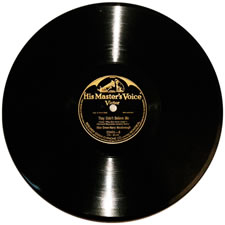
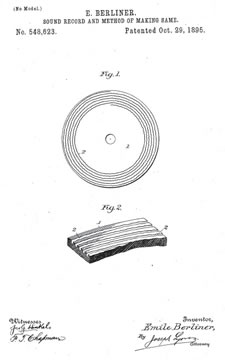
Conceptually, Aletheia’s Veil continues the cinematic investigations first explored in Zeno’s Phantasies (2005). (2) While Zeno’s Phantasies rendered the fundamental temporal phantasy of the spectator — the illusion of motion constructed over time via a series of still images — Aletheia’s Veil renders the fundamental spatial phantasy of cinema: the frame. Formally and politically, the frame includes the boundary of the film gate and the screen — but most importantly the space between these two spaces — the architecture, an architecture in this case articulated by radiant light and resonant sound.
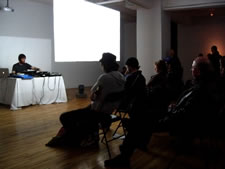
On the evening of the vernissage, I performed a composition commissioned by Dazibao specifically for the exhibition. Limiting source sounds to the last groove of the record, the composition evolves out of the manufactured silence of the recording medium. Dust particles, the grain of the shellac, and the trace of the cutting stylus uncover the foundation for a composition that explores the extreme ends of noise: from the delicate to the abrupt. Custom software routes, processes and modulates the record loops into a field of textures that range from micro-constellations to deep resonant tones.
The DEW Project
A border is not a connection but an interval of resonance, and such gaps abound in the Land of the DEW Line.
—Marshall McLuhan
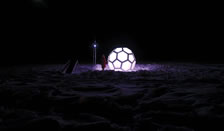
The geodesic radome is the ultimate metaphor symbolising the shift in modern warfare in the second half of the 20th century: an architecture that distributes its structural tension and compression through a network similar to the communication network it shelters. Paul Virilio argued in 1975 “the [cement] bunker is the last theatrical gesture in the endgame of Occidental military history.” (3) A new era of warfare thus needed a new architecture. The geodesic radome with its speed, efficiency and robustness is one of the first known architectures specifically designed to support the theatre of wireless communication and networked warfare. With the onset of the Cold War, reality shifted into game theory where communication of ideologies between players functioned as much as propaganda as defense asset — such as the strategy of MAD (Mutually Assured Destruction). In order for these strategies to be implemented, new infrastructures were built including as the high arctic DEW Line (Distant Early Warning). A joint venture between the US Air Force and the Royal Canadian Air Force, the DEW Line was a network of remote radar and communication stations extending from Alaska, across Canada, to Denmark’s Greenland. Always on alert for Russian bombers flying over the icecap to deliver nuclear warheads, the stations required new technological developments spearheaded by MIT’s Lincoln Labs in the areas of radar, automatic signal detection and — in collaboration with Buckminster Fuller — the invention of the rigid geodesic radome. (4) Today these same countries (Canada, Russia, US, and Denmark) are again turning their attention towards the North driven this time by what could be called the “Warm War.” The Cold War might have been a successful negotiation over the frozen landscape of the Arctic but will the current battle over natural resources and sovereignty in a rapidly melting world share the same quiet fate? A germane topic today, sustainability is not just a question concerning a particular architectural design but the infrastructure and networks between nation states that will determine not only what — but who — is sustained in the future. The DEW Project revisits the issue of boundaries — both in regards to the environment and sovereignty — while observing how communication technology plays a pivotal role in the definition and delivery of such ideologies.
The DEW Project collects several different resources and media as a nexus and thus a perspective for looking at the history of the arctic region and its possible future. At the core of the project is a site-specific “field installation” in the wilderness of the Yukon Territory, Canada. A field installation is a work of art that takes into account the geographical site and like a strange attractor warps one’s perception of the space. Sharing the history of “art installation” which takes into account the architecture of the site and the viewer’s phenomenological position, a field installation creates its own temporary architecture within a space or in a landscape. Such architecture however might not always be a traditional shelter, but can included sonic material, electromagnetic fields, light projection, or relationships. The DEW Project actualized all of these operatives to create an autonomous site that modified the landscape.
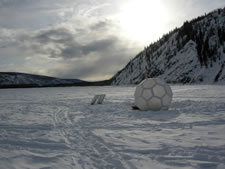
Positioned at the confluence of the Yukon and Klondike Rivers, The DEW Project is a solar-powered remote transmission station. With hydrophones (underwater microphones) embedded into the river’s ice as well as submerged below the ice into the flow of the water, the station continually recorded the shifting sounds of the environment and broadcast them over FM radio to the historic gold rush town of Dawson City. From this point, the audio was bounced onto the internet so it could be listened to live anywhere in the world. Thus one could listen to the audio in three different manners: via the web, locally on FM radio and onsite. The electronics for the field installation were housed inside a 3.3 metre geodesic radome where headphones allowed the visitor to listen to the water flowing directly under their feet. At night the translucent radome radiated outward across the snow field shifting through the colours of the spectrum.
As part of the online aspect of the project, I presented the BAR-1 DEW Line Archive. This online archive was a collaboration with David Neufeld, Yukon and Western Arctic Historian for Parks Canada. The archive collects Neufeld’s 20 years of research on a particular DEW Line site — BAR-1 — as represented in over 200 images, 300 blueprints, and a collection of critical essays. The scope of the research is comprehensive, ranging from military surveillance photographs of the site before construction, several images of construction and then various modes of life associated with the operation of the station starting in 1957 (including the important part First Nations people played in the success of the project).
The DEW Project culminated on the 100th anniversary of the discovery of the North Pole on April 6th, 2009. To mark the controversial event — controversial in the sense of who reached the North Pole first — I gave a lecture on the likewise controversial issue on Arctic Sovereignty followed by a live audio-visual performance called Gravity’s Rainbow. The performance included a 22-minute HD video of the Arctic landscape and a survey of various communications technology used in the northern region (satellite, microwave, radar, radio, etc.). The live soundtrack included, field recordings from the BAR-3 DEW Line site in the Northwest Territories on the Beaufort Sea, use of the live FM radio feed from The DEW Project, and live electronic sounds using electromagnetic microphones.
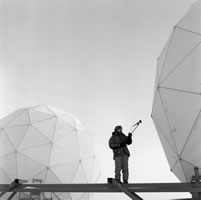
Across and in the midst of the sublime Canadian Arctic, communication technology plays an important and challenging role — not only in the daily functioning of northern communities, scientific research and military operations, but also in a more general creation of one’s phantasy or “Idea of North” and correspondingly who one is as a citizen of North America in relation to this “no-man’s / nomad’s” land. (5) As a result, a long history resides in the region starting with the never-completed Western Union Telegraph, US military experiments in wireless telegraphy during the gold rush, the DEW Line and BMEW connection to NORAD, the North Warning System satellite network, long range ionospheric troposcatter and microwave networks, HAARP experiments in Alaska, and the heavily subsidized high-speed internet network connecting small and remote communities with the rest of the nation and beyond. The functioning of these networks is important to their internal integrity, but just as important is their role as a umbrella across a vast space that many people claim to posses and yet will never set foot upon. Even Glenn Gould, producer of the seminal CBC documentary “The Idea of North” (1967), proclaimed the importance of the Arctic as a concept without spending any serious time there — and yet perhaps this does not matter.
While The DEW Project functions as metaphor for many characteristics of the North, the original DEW Line itself was also little more than metaphor. When the Russian’s launched Sputnik in 1957 (the same year the DEW Line went operational), the point of the DEW Line as technological defense was rendered moot. The DEW Line was built for the speed and resolution of Russian bomber planes (think of Dr. Strangelove), not supersonic intercontinental ballistic missiles, which were definitely part of the USSR’s new arsenal as proved by launching a satellite into space. (6) At this point, the DEW Line (in conjunction with JFK’s space race) became a symbol of protection, while offering little actual security. As a result, it is the communication from the outpost as well as the communication around the radar stations in pop magazines like LIFE which provided the most affect. (7) In other words, it was not necessarily the pulse signals sent north searching for enemy bogeys which mattered, but the public relations bulletins sent south. Marshall McLuhan makes an interesting point when determining that what matters is not the border of confrontation, but the resonant intervals in the North: in this case, the sound of silence interspersed with the occasional sweep of the radar or the hum of generators fending off the chill of a Cold War.
Glossary
BAR-1 DEW Line Archive. Originally a CD-ROM collection of images and text compiled by David Neufeld giving a comprehensive portrait of a prototype DEW Line station, it now exists online on the author’s website.
CBC. The Canadian Broadcasting Corporation is a Crown corporation started in 1936 and utilised as a nationalist propagandistic media network via the mediums of radio, TV and internet.
DARPA: Defense Advanced Research Projects Agency mission is to “maintain the technological superiority of the U.S. military and prevent technological surprise from harming national security by sponsoring revolutionary, high-payoff research that bridges the gap between fundamental discoveries and their military use.”
DEW Line. Distant Early Warning Line was a military operation constructed from 1954–57 as part of the Cold War defense strategy initiated by the US government and primarily installed in the Canadian Arctic along the 70ºN latitude.
Field Installation. A work of art that takes into account the geographical site comparable to a strange attractor that warps one’s perception of the space. Sharing the history of “art installation” which takes into account the architecture of the site and the viewer’s phenomenological position, a field installation creates its own temporary architecture within a space or in a landscape. Such architecture however might not always be a traditional shelter, but can included sonic material, electromagnetic fields, light projection, or relationships.
Geodesic Radome. The geodesic dome often thought to be invented by R. Buckminster Fuller was actually first utilised by a German architect to construct the dome of a planetarium before WWII. Buckminster popularized the form and the name as well as held the patents. It is still considered one of the most efficient structures ever designed and still used today to house arctic equipment.
HAARP. The High Frequency Active Auroral Research Program in mid-Alaska is a DARPA initiative that looks at the study of ionospheric physics and radio science. While deemed a non-classified operation several rumours and legends surround this remote research facility shrouding it in a mysterious context.
NORAD. North American Aerospace Defense Command is a continental defense network with its headquarters in Colorado Springs. With the motto “Deter. Detect. Defend.” it not only acts as a radar defense system for the protection of North America but tracks worldwide missile launchings, satellite traffic, supports NASA for shuttle launches, and many other operations.
Ouimetoscope. Built by Léo-Ernest Ouimet and inaugurated on January 1, 1906 at the corner of Sainte-Catherine and Montcalm Streets, in Montréal, Canada, the Ouimetoscope is consider by many to be the first cinema built exclusively for motion picture exhibition.
Warm War. The Warm War is a neologism for the new conflict arising around the issues of sovereignty and ownership of natural resources in the polar regions as a result of global warming.
Notes
- For a comprehensive archive of each project’s texts, documentation, and media visit Aletheia’s Veil and The DEW Project. All images in this essay are copyright Charles Stankievech, except Emile Berliner’s patent drawing.
- More details about Zeno’s Phantasies are available on the author’s website.
- Paul Virilio, Bunker Archeology (New York: Princeton Architecture Press, 2009, 2nd edition, trans. George Collins), p. 46.
- See Lincoln Labs Journal 12/2 (Cambridge MA: MIT Press, 2000) for a good introduction to the historical genesis of the DEW Line.
- Typically, the Arctic was seen as a no man’s land, the last frontier and empty space to conquer and extract resources from. Thankfully however, with the respectful acknowledgement of the indigenous population that traditionally migrated across the tundra following herds of caribou and other animal life, the region is now seen more as a nomad’s land full of history. This point is especially highlighted when contrasted with Antarctica where there is no indigenous population.
- Consider North Korea’s current and similiar mission to launch a satellite as interpreted by Japan and other nations as coded testing to develop intercontinental missile technology.
- See the article in LIFE Magazine (March 1, 1963) titled “War Watch in the Arctic”, pp. 18–29.
Social top